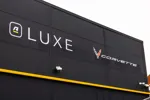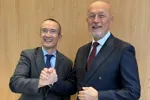Who'd be a carmaker executive in the UK? MG Rover directors are facing intense public, media and Government scrutiny over allegations of asset stripping, former Vauxhall boss Nick Reilly had workers storming his offices in 2000 when General Motors announced plans to end car production at Luton, Mercedes-Benz director Dermot Kelly had to deflect legal action when restructuring the retail network, while Nissan chiefs operate under the constant threat of CEO Carlos Ghosn shifting production away from Sunderland because of the Government's refusal to join the Euro.
It's all about making the tough decisions – and facing the consequences. But there's one man who faces arguably the greatest challenge – and it's one that he is tackling with relish. Fiat Auto UK managing director Massimo Toso was parachuted into the company 18 months ago to replace Jim Blades, a man who was well-respected in the industry.
Critics called it an example of then Fiat Auto chief executive Giancarlo Boschetti filling key management positions with his own men – Toso had worked under Boschetti for a number of years in Italy – but whether that was true or not, the main consequence has been a closer, more direct, working relationship with the factory.
Given Fiat's need to control costs, Toso seems an ideal choice to run the business. A finance expert, he started his career at Olivetti and Arthur Andersen in engineering and project analyst roles. Toso joined Fiat's finance department 12 years ago, working in Portugal and Spain, before returning to Italy as a controller under Giancarlo Boschetti. He had ambitions to run his own operation – “to sell cars and make money” – and was given that opportunity in September 2002 when promoted to UK managing director at Fiat Auto.
That was a testing period. Fiat was facing criticism from the press over product quality and had a poor image with customers. It was struggling to stay afloat and had to make changes, many as part of the Fiat head office turnaround strategy, in order to reduce losses, increase sales and move back to profit. That strategy is ongoing (see panel).
One of the changes that had an immediate impact was to pull out of the unprofitable rental market. The consequence was that sales dropped from 82,915 to below 75,000 last year, 10% down on 2002, which had industry watchers writing Fiat's obituary. Toso, though, claims that 7,000 lost sales were down to the decision to withdrawal from low profit rental. “In reality we only dropped 1,000,” he adds.
The situation for dealers was not nearly as bad as it appeared. Most sell light commercial vehicles, and those volumes rose by 20,000 during 2003. Indeed, last year was a real landmark for Fiat UK: it increased the size of its retail network for the first time in 12 years.
Why? The company took a decision to gradually pull out of its stakeholder partnerships with some dealers in the late 1990s which left gaps in the network. Now, with new models entering the range, it needs to fill those gaps, which cover prime locations like London and Birmingham. And those open points, unlike in other European markets, will not be filled by Fiat opening its own sites. “We have no plans to buy up dealerships – that would be very much a last resort if we were unable to get the right coverage,” says Toso.
So what can he offer prospective retailers? Fiat intends to raise sales for the first time in three years (when it sold almost 98,000 cars). It wants to take between 3.5-3.7% of the market within 15 months (2003: 2.9%) with a strategy based on launching new models, including Panda 4x4, a joint venture SUV with Suzuki, the upper medium 'New Large', aimed at the fleet market, plus a new Siecento and a micro car in a few years' time, likely to be based on the Trepiuno concept shown at Geneva.
Fiat will also rely on the Panda and its MPV family, which includes Idea, Doblo and new Multipla, while in the LCV market, it wants to take a 4% (currently 3.5%) share. Within three years Toso predicts Fiat will have one of the youngest car ranges on the market. This, he hopes, will help to attract around 30 more retailers over the next 12 months to swell the network beyond 200, with the focus on the south and large cities.
The backbone of the network remains independent retailers, although they need to be of sufficient size to house the expanding model line up. New retailers are offered Fiat only, as the company continues to separate itself from Alfa Romeo. Toso says Fiat is the volume brand, while Alfa Romeo only offers “complementary” sales.
That said, both brands are available should dealers want them, although showrooms need clear separation and individual sales teams. “You need a different set of skills and experience to sell Alfa Romeo,” adds Toso. “We want to make the business simpler for our dealers. We want to be a profitable franchise and that does mean working together.”
These are not hollow words. Toso visits “at least one dealer a week” and has set up a committee to listen to their views on every aspect of their operations. “I want to know what's happening in the real world,” he says. “We are working hard with dealers and our people to achieve what we deserve. At the moment, because of perceptions of the Fiat brand, we need to overperform to achieve the average – we have to convince customers that we are now in a position to offer quality cars.”














Login to comment
Comments
No comments have been made yet.